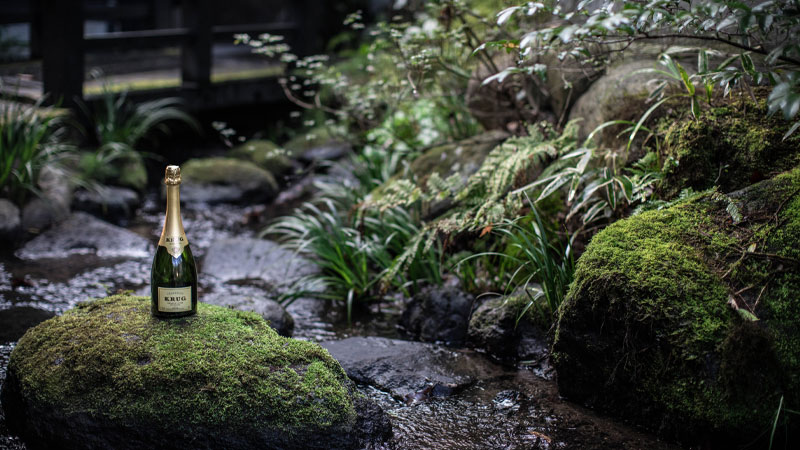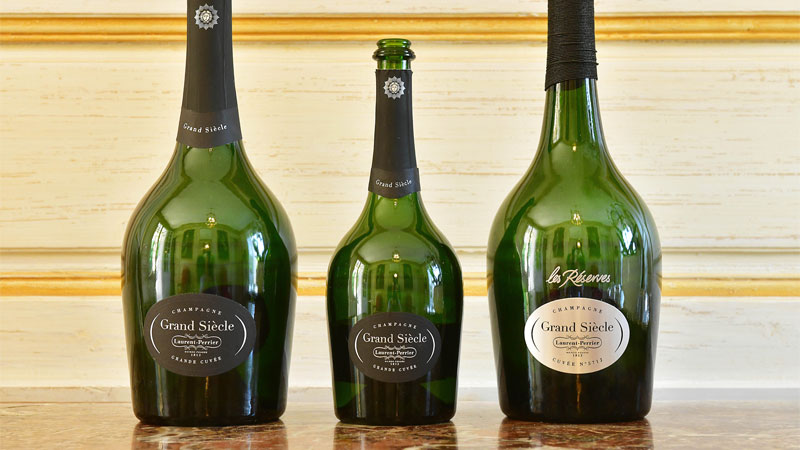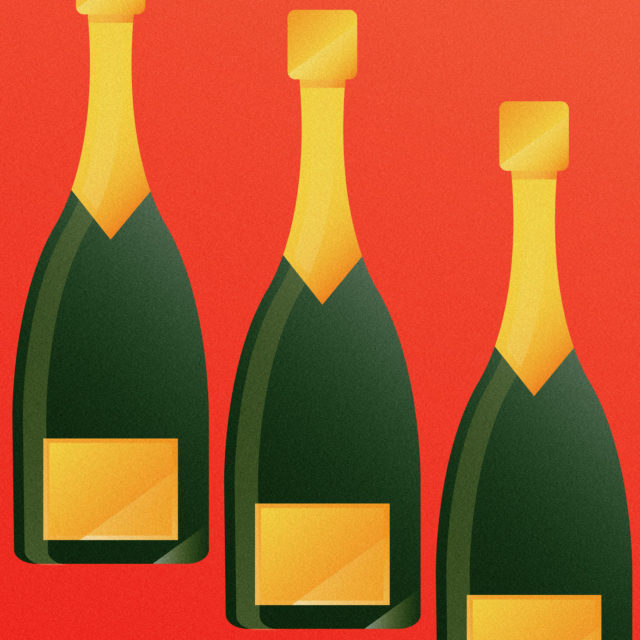There may be no such thing as bargain-priced Champagne, but non-vintage (NV) varieties do offer relative value. On digital retailer Wine.com, for example, the average price of a 750-milliliter bottle of vintage Champagne is $112, while non-vintage bottles average $58.
Non-vintage Champagnes are made by blending the current vintage with reserve wines from previous years, and they are “generally lighter in body with more fresh fruit flavors,” according to the WSET Level 3 Award in Wines textbook. Vintage Champagnes, on the other hand, are made only in the “best years,” according to WSET, are more concentrated, and contain more complex notes. Wine.com also describes vintage bubbles as the “topmost expression of a Champagne house.”
Yet, thinking of vintage Champagne as a superior product to NV is an oversimplification of the world’s preeminent sparkling wine. In fact, many in the industry argue that NV bottles not only offer a better representation of the heart and soul of Champagne; in reality, the practice of blending multiple vintages can create a superior product.
Champagne has always been a blended product, says Peter Liem, author of “Champagne: The Essential Guide to the Wines, Producers, and Terroirs of the Iconic Region,” and publisher of the online reference ChampagneGuide.net. “The region has notoriously bad weather, so blending multiple vintages in an insurance policy,” he explains, “especially in the past when conditions were much cooler.” While the region now enjoys warmer conditions, the practice still allows for better consistency, Liem says, and successful blending can elevate a base wine into something that is greater than the sum of its parts.
“We don’t think of our [non-vintage] Brut Reserve as our ‘entry-level’ wine, we believe it is the flagship of the house,” says Remi Vervier, managing director and oenologist at Champagne Palmer & Co. The non-vintage blend is the first encounter most consumers will have with the brand, he says, “so it has to be made to a very high quality.”
Vervier describes the reserve wines added to non-vintage blends as “spices” that enable him to craft a blend that perfectly fits Champagne Palmer’s house style. So important are these reserve wines, in fact, that the house just finished construction of a special facility exclusively for the storage and management of reserve wines.
Unlike Port, where the local appellation determines the years in which vintage wines can be made, it’s up to Champagne houses to declare if they’re producing a vintage or not. But even when growing conditions are perfect, and despite the elevated sums vintage bottles can command, releasing a vintage wine may not always be the best option for a Champagne house.
Gary Westby, the Champagne buyer for K&L Wine Merchants, argues that a great vintage wine might instead be more useful as a reserve wine. ”If you talk to producers, they prefer 2009 over 2008 as a vintage release,” he says by way of example. “To most of us in the press or in the trade, this seems completely crazy.” The 2009 vintage produced “nice and round and ripe” wines, Westby says; whereas 2008 vintage Champagne was “an earth shatterer” and the “vintage of a generation.” But for winemakers, “it makes a lot more sense to save that 2008 vintage as reserve for their non-vintage program,” he says.

Vintage Champagne production currently accounts for just 5 percent of the region’s output. Non-vintage wines, on the other hand, are Champagne houses’ “bread and butter,” Westby says. It shouldn’t come as a surprise to learn that many houses place more importance on their NV blends, but Westby admits that many of his collector customers are shocked to hear it.
If you do want to spend a little bit extra on Champagne, Westby says non-vintage magnums offer much better value. They’re just as capable of aging, he says, they often contain really high-quality base wines, and you get much more bang for your buck.
Of course, not all NV wines carry entry-level price tags. Arguably the most prestigious NV Champagne is Krug’s Grande Cuvée, which retails between $170 and $250, depending on the “Edition.” (Krug numbers each non-vintage release, or “Edition,” to acknowledge that each is a unique blend, but always made with the same philosophy in mind.)
When Joseph Krug founded the house in 1843, he designed Krug Grande Cuvée to be “the fullest expression of Champagne, re-created every year, regardless of annual climate variations,” Olivier Krug, director of the Krug house, writes VinePair in an email.
Each bottle of Grande Cuvée contains a blend of over 120 different wines, spanning more than 10 different vintages. “Blending so many different wines from different years lends a fullness of flavors and aromas that would be impossible to express with the wines of a single year,” Krug adds.

Champagne house Laurent-Perrier also makes its Prestige Cuvée using a multi-vintage blend. Called Grand Siècle, or “Great Century,” the cuvée takes its name from the period of French history during which Louis XIV, the “Sun King,” ruled. Westby describes Grand Siècle as the “top value” Prestige Cuvée offered by any of the grande marque Champagne houses.
Laurent-Perrier’s cellar master, Michel Fauconnet, assembles the Grand Siècle blend from three complementary wines, produced exclusively from grand cru vineyards in vintage-quality years.
During a recent tasting, deep in the house’s underground cellars, Fauconnet explained that the vintages should provide the perfect balance of “finesse, structure, and freshness.” But just like Champagne Palmer’s Vervier, Fauconnet believes that Laurent-Perrier’s “emblematic wine” is its La Cuvée brut non-vintage. (“Grand Siècle runs a close second, he says)
“If nature doesn’t give you the perfect vintage,” Fauconnet says, “you have to create it.”
In an era when ideals such as “minimal intervention” winemaking are of increasing importance, it’s useful to remember that, in its essence, Champagne is the product of maximum intervention. And that’s not a bad thing, at least not according to Peter Liem, who says, “Winemaking is not a dirty word.”
